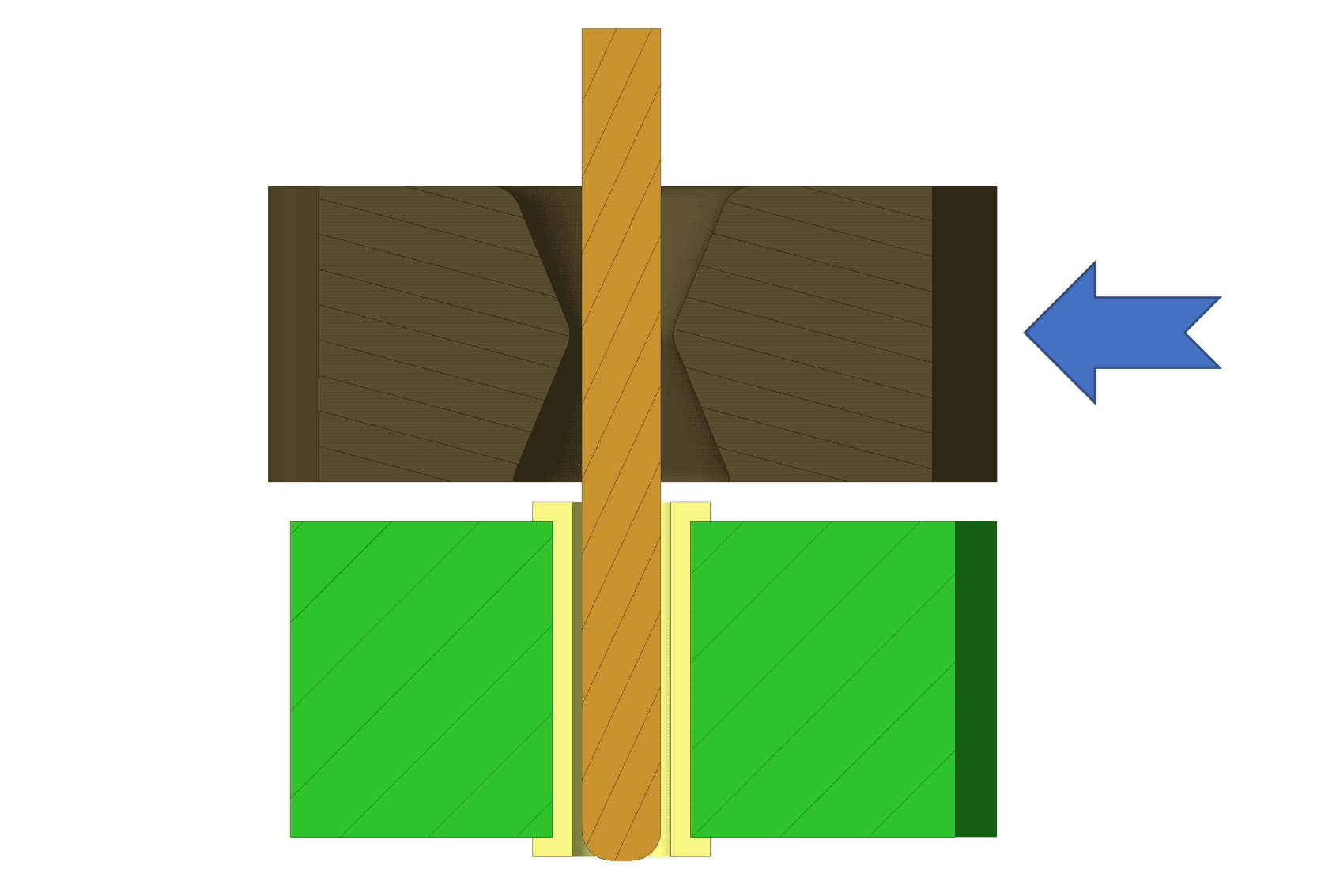
PERFORMANCE INTERCONNECT


S-FECT ™
TECHNOLOGY
GOOD-BYE PRESS-FIT
HELLO S-FECT™
Slide-Fit is a solderless contact interface system superior to press-fit...
What is S-FECT™ Technology?
S-FECT ™ stands for Slide-Fit Electrical Contact Termination.
Slide-Fit is a solderless contact system superior to press-fit because it mates repeatedly with PCB vias non-destructively, and the connector does not require installation tools like press-fit connectors.
Slide-fit can be used at the interface between a pin and a socket where the socket is passive and the pin assumes the mating action.
S-FECT™ achieves gas-tight interface between the male contact termination and the PCB via.
The S-FECT™ geometry is designed specifically for each contact diameter to ensure the contact operates within elastic deformation throughout the temperature rating of the contact.
Throughout 2025, the S-FECT™ Technology is scheduled to undergo performance testing according to the ESCC-3401 specification.
The S-FECT™ Technology embodies two classes of offsetting systems: pre-insertion offset system and post-insertion offset system.
The pre-insertion offset system is suitable for interconnect applications where the number of insertion/removal cycles is limited.
The post-insertion offset system is suitable for all interconnect applications, especially when blind-mating high contact counts and for applications requiring a high number of insertion/removal cycles. The post-insertion offset system permits mating operations in a spectrum of very low to zero insertion forces.
S-FECT™ Technology can be adapted to both ends of a connector thereby permitting a single piece connector to directly interconnect printed circuit boards in parallel or at right-angle configurations in blind-mating applications.
S-FECT™ Technology can be easily applied to any connector to obtain a reliable substitute to press-fit technology.


PCB
offsetting plate
PCB
Contact with pre-insertion offset, non-collapsible proprietary design with low insertion force. The wipe between plated surfaces is minimized and the insertion force distribution is different from press-fit because the piercing characteristic is eliminated.
Contact with post-insertion offset
(note the contact is first inserted into the via hole and the offset is applied once the contact is in final position resulting in no wipe with the plating finish)
OUTLINE OF CONVENTIONAL PRESS-FIT CONTACT DESIGNS, THEIR EFFECT TO THE METALLIZED VIA IN PCB AND REWORK COMPATIBILITY:

Hard Rigid press-fit interface - square peg in a round hole - most damaging to PCB - no rework possible.


Hard Compliant interface - sharp edges cut through the plating into the base material - may rework PCB with risk on reliability. High insertion forces, most typical in automotive applications where contacts are inserted automatically one by one.

Low-Force compliant
eye-of-the-needle - wipes the plating on the wall but the impact is light - high deformation compliance results in lower material mass through the zone of interface - can be reworked up to three times but insertion and extraction forces become lower with each cycle.


Low-Force compliant
C-section or Ω-section - wipes the plating on the wall a bit harder but sacrifices less material mass through the zone of interface - can be reworked up to three times but the insertion and extraction force values have higher variation from initial values with each cycle.
MATRIX OF SOLDERLESS INTERFACE TECHNOLOGIES AND CLASSIFICATION OF S-FECT™

BASIC ADVANTAGES OF S-FECT™ TECHNOLOGY COMPARED TO PRESS-FIT

PRESS-FIT INTERFACE TECHNOLOGIES COMPARED TO S-FECT™
